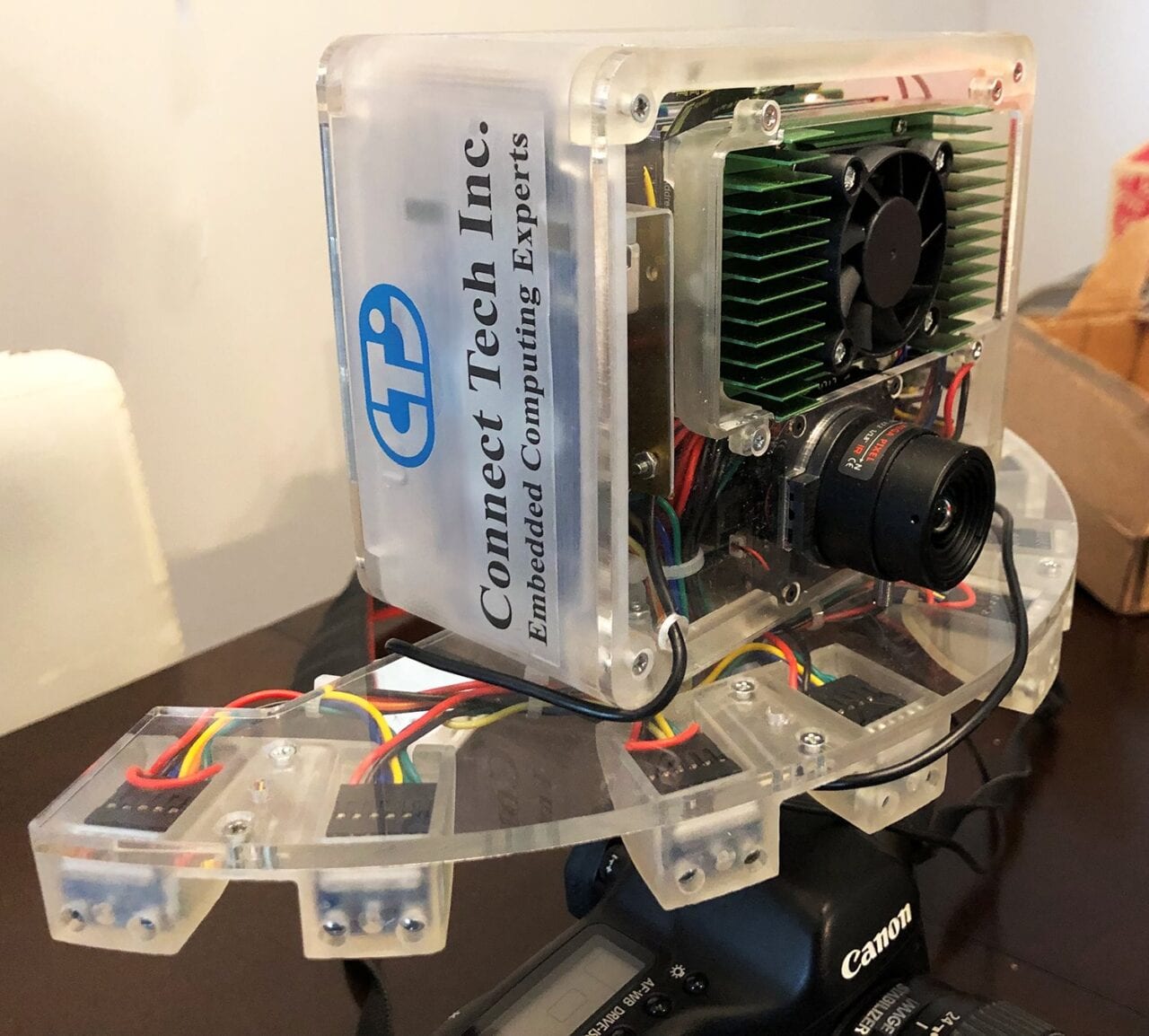
Connect Tech Inc., whose embedded computing products are pictured here, is one of the companies that could enable future AI-powered edge computing for the Department of Defense. (Connect Tech Inc.)
Autonomous intelligence, surveillance, and reconnaissance (ISR) assets that employ edge computing capabilities look to be a significant growth area for defense aerospace companies.
“Business case-wise, what we’re seeing, our biggest uptake is definitely in the ISR space, in terms of those verticals,” said Patrick Dietrich, chief technology officer of Ontario-based Connect Tech Inc., speaking during the Sept. 2 Association of Unmanned Vehicles Systems Institute (AUVSI) webinar, “Advancements in Autonomy for DOD Robotics and Autonomous Systems.”
“We have seen a lot of systems moving from traditional ISR techniques. Maybe it’s a vehicle that’s being remotely operated, and now it’s autonomous,” Dietrich added.
U.S. Air Force acquisition chief Will Roper said recently that artificial intelligence-enabled drones that pump relevant ISR data immediately to shooters through machine-to-machine interfaces may one day be the leading edge of U.S. military force.
“If we’re going to take a big airplane with people on it into harm’s way in a future fight, we’re going to have to explain why we couldn’t do that mission differently,” Roper said. “One of the most important things they’re going to do is produce data that we can use to get smarter about what that contact point of war looks like. I think that those leading edge assets, whether in the air, on the sea, or on the ground, will have to be quarterbacked by people in platforms that are standing back, ready to make the calls.”
One of the top Air Force acquisition priorities is the Advanced Battle Management System (ABMS) for which the Air Force is requesting $3.3 billion over five years.
A key component of ABMS will be software-defined radios that use AI.
“We are truly entering a new age of software defined autonomous applications,” Dietrich said. “Until now, many complex DoD applications, or edge-based systems, had been more automated with more fixed functionality constraints and pre-canned assumptions, rather than truly autonomous. What we’re seeing is that tomorrow’s systems are being defined by deep learning and AI with that software being run at the edge.”
The promise of edge computing for the military may lie in several areas. Airborne ISR assets using edge computing would bypass clogged bandwidth capacity to transmit real-time data to military forces in the field, while edge processing could better protect sensitive and classified information previously sent to the cloud. In addition, airborne ISR assets using edge computing could see their capabilities blossom in areas of the world where LTE connectivity is limited.
Challenges ahead for defense aerospace firms in the autonomous AI realm include creating a system able to run complex, neural networks in parallel; picking the right platform to include and accelerate key parts of the edge computing system to fuse data from sensors and process the data through deep learning algorithms to meet the real-time application needs of military users; and managing the potentially large scale of neural networks.
“We see a big push for real-time ISR data, crucial for quality intelligence and enhancing the effectiveness of military operations,” Dietrich said. “ISR systems can include real-time processing of optical radar, infrared images, as well as electronic signals. Edge devices on unmanned aircraft, ground or sea-based systems, and human intelligence teams allow for real-time decision enhancement.”
AI computing chips have increased in availability and now include various products by companies, such as Intel, NVIDIA, and Google, including Intel’s Atom chip and NVIDIA’s Jetson Nano. Such chips may see wider use in military platforms, as the work stations are not associated with significant size, weight and power growth.